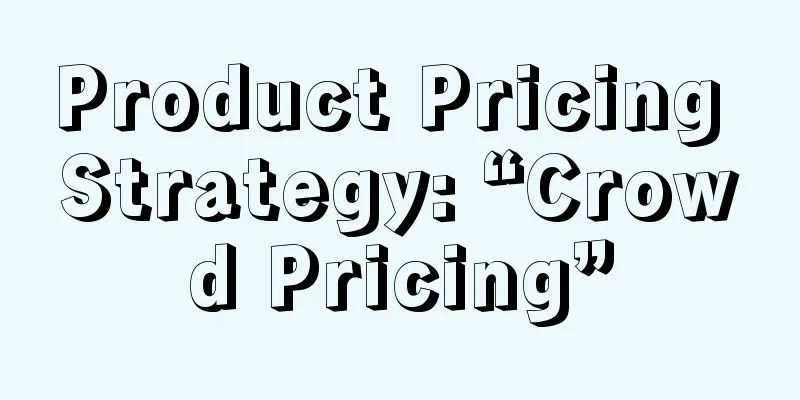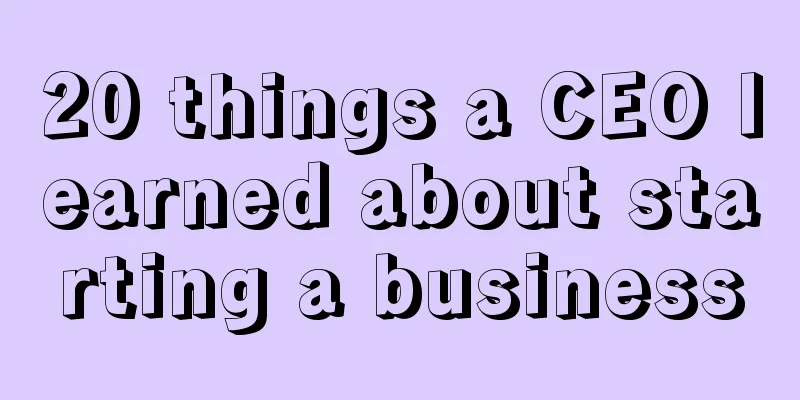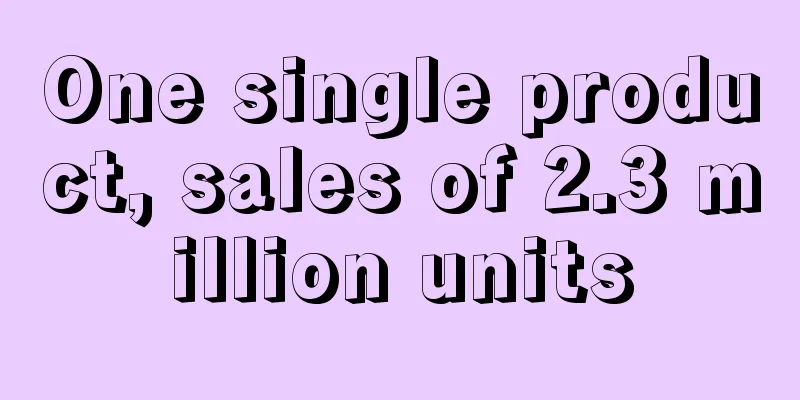Product Pricing Strategy: “Crowd Pricing”

In this article, Teacher Little Fox focuses on sharing with everyone how to price products based on the target audience. To be honest, the issue of product pricing has troubled many people. Some friends who have been in business for many years often don’t know what the appropriate price is for a product. This question has troubled me for many years, until I looked at it from a different angle, and it suddenly became clear... Generally speaking, there are two ways to set prices: 1. Refer to the prices of competitors for pricing. 2. Set the price based on product cost plus a certain percentage of profit. In fact, I think both of these methods are not very appropriate. A. If we refer to the pricing of competitors, then our products will be used as a benchmark by our peers . If you are not as strong as your competitors, then you will become a foil for them and put yourself in a passive position. Isn't this a taboo in entrepreneurship? B. If we just add a certain percentage of profit to the price, our product price seems to be neither too high nor too low, and it is not biased, but very moderate! We think that customers should be able to accept this price. How can we shape the value of the product in this way? How can we highlight the advantages of the product? In the end, we find that customers do not pay, but just enjoy themselves... How should products be priced? First of all, we need to understand that our product pricing is not strongly related to product cost; Many people don’t know how to set prices because their brains automatically associate product costs with product pricing, forming an anchor point. Therefore, when setting prices, people always aim at their own costs, which restricts the pricing space. In the end, I fell into an endless cycle of confusion in my brain: if I set the price too low, I felt that there was no profit; if I set the price too high, I was worried that the customer might not be able to accept it… The "antidote" to this problem is in the following sentence; In fact, what customers buy is not the product itself, but the value that the product brings to customers! I wonder if you can understand? This sentence brings us several information points:
These bits of information are very important! As long as you can find the corresponding information points step by step, you can do a good job of pricing your products. Teacher Fox will explain it to you individually below; 1. Choose the right customer groupDifferent customer groups are willing to pay different prices for the same product. For example, the same "outdoor tent",
Why? Because of different platforms and different customer groups, customers have different psychological needs for the products they purchase. Even if the same person
Therefore, a premium can appear on JD.com. Customers are willing to spend a little more to buy peace of mind. On the other hand, on PDD, the same customer can give you a bad review for a few cents... There are many other dimensions for customer segmentation, such as occupation, age, hobbies, nature of work, etc. Choose different platforms (actually not just platforms), people with different status and different needs, and the prices can be different! It is impossible to sell your products to everyone. The same product can be sold to different people at different prices. Therefore, it is important to determine the target audience before setting the price! 2. Discover the needs of customer groupsThis does not require in-depth analysis. Everyone knows that selling products means selling demand. After identifying the target group and finding out their real needs, you will know how to proceed to the next step and create value. What is the real demand? For example, outdoor tents;
This is because different groups of people have completely different demands for products. Of course, there are many points that can be subdivided here, which I will not expand on here one by one, after all, you are more familiar with your own products. In short, the more thoroughly you understand your customers' needs, the more stable your control over prices will be. 3. Create different values for different customer groups;I wonder if you have fully understood the analysis provided by Teacher Fox above? Once you have identified the target audience and discovered their needs, you can shape value based on their needs. Back to the beginning: what customers buy is not the product itself, but the value that the product brings to customers! When a customer buys a tent for a child, they are buying it to bring experience and fun to the child, and they pay attention to the health of the material and the safety of the child. When customers use it for adventure camping, what they are buying is their own safety and peace of mind in the outdoors, because no matter how cheap the tent is, if you lose your life, you lose everything. When selling to different people, the design, materials, packaging, etc. of your product may be different, and the value created also needs to change according to the needs of the group of people. Fox Summary The three steps of crowd pricing: identify the right crowd - discover needs - shape value ; The same product can have completely different prices if it targets different groups of people and has different payment capabilities; For the same product, if different people have different demands for the product, the value it brings to customers will be different, and the price may also vary greatly. Author: Little Fox WeChat public account: Fox Loves Nonsense |
<<: Brands, seize the dividends of small categories
Recommend
What are the three types of Amazon keywords? Where should I write the keywords?
Amazon keywords are words related to products that...
You have made so many earth-shaking advertisements, why are they useless?
Many human behaviors are controlled by the subcons...
Mengniu's Olympic planning deserves a gold medal
In the wave of Olympic marketing, the Mengniu bran...
Where can I open Shopee's overseas warehouse? What is the process for entering the warehouse?
After we open a store on Shopee, there are many th...
With new regulations being released intensively, is video account e-commerce entering a runaway mode?
Video account e-commerce has recently released new...
What are some ways for Shopee to increase store conversion rates? Is there any way?
In the fierce competition, improving store convers...
From "B-game" to "AI love", why are today's young people in love with "AI"?
Why do young people choose to fall in love with &q...
Tik Tok restructures its recommendation algorithm, 3 major changes need to be noted!
Recently, Douyin restructured its recommendation a...
Can mainland China open a store on the faire platform? What procedures are required to open a store in Taiwan?
More and more sellers and brands are looking to ex...
When is Amazon Prime Day? What benefits can I enjoy?
Amazon and Taobao are quite similar. Both are shop...
Do digital credit cards have physical cards? Where can I apply for a digital credit card?
With the rapid development of financial technology...
How can I pay the annual fee of Alibaba International Station cost-effectively? What are the conditions for entering the International Station?
Alibaba International Station is the only online t...
Can a novice engage in cross-border e-commerce? How to do it well?
Cross-border e-commerce is developing very well no...
How many times can an Amazon review be changed? Can it be deleted?
Amazon reviews refer to user reviews, which are pr...
Why do brands always use the “limited-time return” tactic so successfully?
Some time ago, brands such as Honor of Kings, KFC ...









